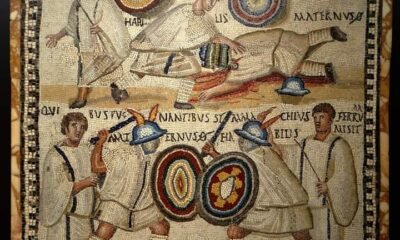Health & Society
A smoke-free future, what is the importance of vitamins?
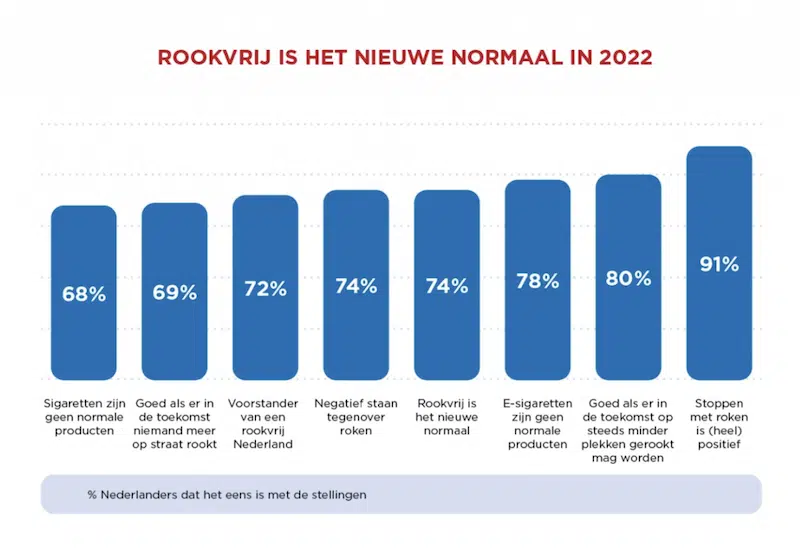
by Nick van Ruiten | Oct 12, 2023 Smokers want a smoke-free future. To succeed, supporting the body is important. What role do vitamins play in this?
Smokers are aware of harm
You don’t have to convince smokers that they are damaging their health. They know all too well that they are putting unnecessary strain on their bodies. Smokers are confronted with this every day, especially in this Stoptober month*.
It is generally known that cigarettes contain more than 4,000 chemicals, hundreds of which are harmful to health and dozens of which are even carcinogenic. That is why being smoke-free is now the ‘new normal’*.
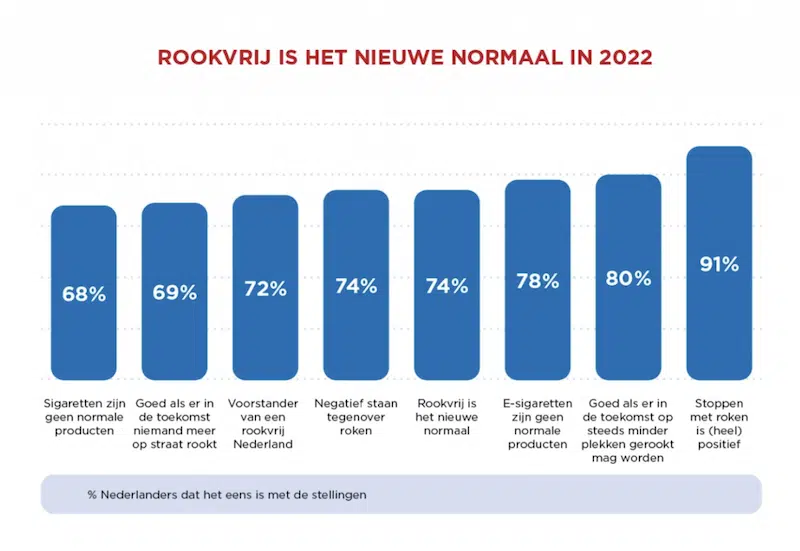
The toxic substances in tobacco smoke cause damage to the body, cells and tissue. This can lead to accelerated aging and a greater risk of health problems.
Smokers therefore know that they should actually quit and they have often made many attempts. But because quitting can be accompanied by nervousness, sleep problems, anxiety, headaches, concentration problems, irritability, dizziness and a craving for food, quitting is often a difficult process.
What people who want to quit smoking often do not know, but what is crucial to know, is that you can support the body in reducing and quitting smoking. Even those who want to continue smoking often do not know how they can optimally protect their body against the bad influence of tobacco smoke.
- Stoptober: https://stoptober.nl/
- From: https://www.rookvrijgene.nl/artikelen/driekwart-van-de-nederlanders-vindt-rookvrij-het-nieuwe-norm/
Oxidative stress, free radicals and antioxidants
The damage to cells and tissues in the body caused by smoking is mainly caused by oxidative stress.
Oxidative stress is a normal phenomenon in nature and is the process that underlies the normal aging process of the body’s cells. Chemically speaking, it involves a reaction with oxygen, as we see when iron rusts.
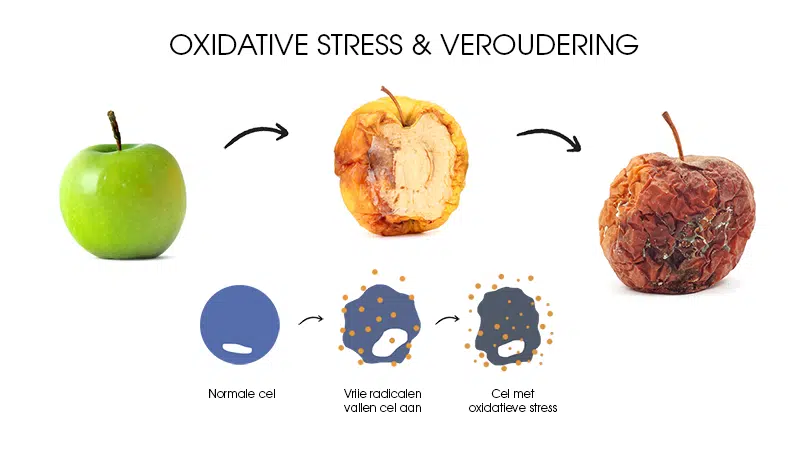
When there is too much oxidative stress, as is the case with smoking, the body is damaged and the aging process will accelerate. The health of the body can deteriorate and requires a lot of energy to recover.
Oxidative stress is caused by free radicals . Free radicals are unstable molecules that can oxidize (rust) cells and tissues, causing damage.
Your body tries to protect itself as much as possible against oxidative stress with the help of antioxidants . An antioxidant is a substance that prevents oxidation and can neutralize free radicals and render them harmless.
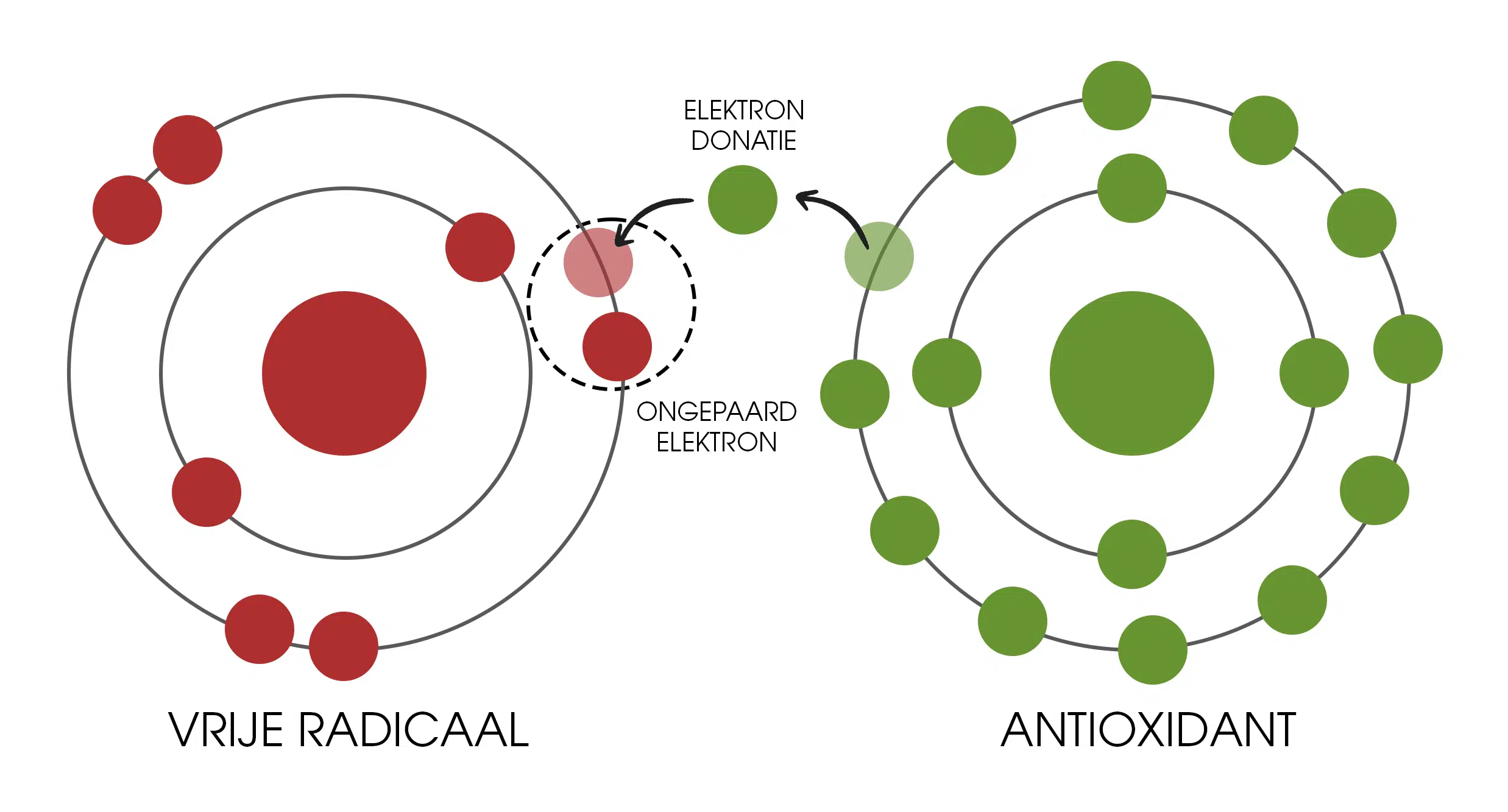
Protective antioxidants are essential to prevent damage to cells and the body. If there is no balance between the number of free radicals and antioxidants, the free radicals are not neutralized and oxidative stress occurs in the body.
Smoking puts large amounts of free radicals in the body, which increases the demand for antioxidants. This can quickly lead to an imbalance between the number of free radicals and antioxidants, causing increased oxidative stress and accelerated aging.
The role of vitamins and minerals
It is generally a known fact that many vitamins and minerals have a protective function for smokers due to their antioxidant effect. As a result, they play a major role in preventing harmful oxidative stress in the body of smokers.
Due to harmful tobacco smoke, smokers will also consume these vitamins and minerals more quickly , which means they will be more likely to suffer from major deficiencies than non-smokers. In addition, the harmful substances in tobacco smoke can also hinder the absorption of vitamins and minerals.
Many vitamins and minerals are now recognized as acting as antioxidants. Here are some famous examples:
Vitamins: Vitamin C, Vitamin E, Vitamin A, Vitamin B2
Minerals: Copper, Manganese, Selenium, Zinc
These are the vitamins and minerals that can be said to act as antioxidants. There are many other nutrients that have antioxidant properties. That is why a healthy and varied diet is of great importance, with an optimal balance of vitamins, minerals and trace elements in the right amount.
If you want to quit smoking or want to gradually cut back, it helps to prevent deficiencies in these essential nutrients.
For smokers, the following two vitamins in particular play an important role in protecting their bodies against oxidative stress: vitamin E and vitamin C.
The importance of vitamin E and vitamin C
Vitamin E is the first line of defense that protects the body against the free radicals caused by smoking. In addition, vitamin E protects the alveoli in the lungs. That’s why it’s so important for smokers to ensure they get enough vitamin E.
Because vitamin E is so important for protecting the lungs, in the event of a shortage, the body will extract vitamin E from other tissues and bring it to the lungs. This also causes vitamin E deficiencies to develop more quickly in all other tissues of the body. All tissues of the body therefore become increasingly vulnerable to toxins and free radicals.
By neutralizing the free radicals, vitamin E will not only become ineffective but will also become a free radical itself because the effect of vitamin E is exhausted. That is why you also need vitamin C because it comes to the rescue of vitamin E by helping to restore the ineffective vitamin E to its active form.
Vitamin C therefore works as an antioxidant for vitamin E and returns this vitamin to its active and working form. Taking vitamin C can prevent the serious depletion of vitamin E in smokers because the vitamin E can be continuously reused in this way. Without vitamin C, the effective vitamin E will quickly diminish and oxidize.
Vitamin C itself is also a strong antioxidant that helps protect cells against the oxidative damage caused by tobacco smoke. Vitamin C will also be used up quickly by smokers and smokers may develop deficiencies.
We all need at least 40 mg per kilogram of body weight of vitamin C (40 x weight = number of milligrams of vitamin C). But smokers need more. It has been determined that a smoker needs at least an additional 50-100 mg of vitamin C per cigarette.
Since vitamin C is also necessary for collagen formation, smoking will affect the quality of collagen in the body. Healthy collagen is important for bones, cartilage, teeth and gums, among other things. The quality of our blood vessels and the health of our skin also depend on collagen.
This also explains the ‘Smoker’s skin’ that many people who have smoked or have smoked for a long time suffer from. The breakdown of vitamin C by the harmful substances in tobacco smoke leads to reduced quality of collagen in the skin and accelerated skin aging.
Support for (quitting) smoking
In addition to the above data, all vitamins, minerals and trace elements play an important role in maintaining health for all of us, but especially for smokers.
If you want to stop or gradually reduce your intake, it will certainly help if you ensure that you eliminate and keep away all deficiencies.
Take a good multivitamin with all vitamins and minerals in the right balance and quantity, in combination with extra calcium and magnesium ( CalMag drink ) and sufficient vitamin C.
Of course, all this in combination with improving all other aspects of a healthy lifestyle.
For smokers and people who want to quit smoking, it is important to know about the importance of vitamins and minerals.
Then also listen to the De Rook Stop Buddy Show by Maarten Groen and Margot Broer with Drs. Nick van Ruiten – https://www.rookstopbuddy.nl/rook-stop-buddy-show/
Health & Society
Religious fundamentalism as psychosis
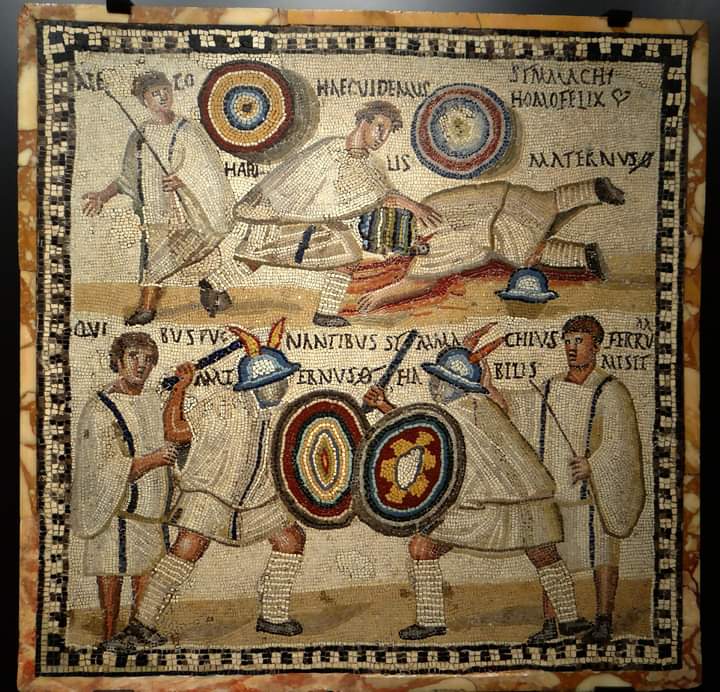
By Vasileios Thermos, Psychiatrist, Professor, and Priest of the Church of Greece
At the very beginning, we consider it necessary to make some clarifications. First of all, fundamentalism is not about specific ideas and beliefs. It should be seen as a particular worldview, as a way of thinking and relating – dualistic, paranoid, despotic and punitive.[1]
From this point of view, fundamentalism, although born in a Christian environment, is also found in a secular context – even an atheist or a rationalist can exhibit the above characteristics in their way of thinking. In such a case, the term “fundamentalist” is not used literally, insofar as it does not refer to the content of specific ideas. It is not related to any relevant reflection on the foundations in the particular variation of Modernity. Rather, it refers to the modern practice of investing in an absolute way in concrete ideas, as well as the neglect and hatred of the different that accompany this practice. Humanity has experienced the horror of secular fundamentalism in the form of militant godlessness. In our time, this hybrid manifests itself in the more moderate forms of ideological bias and scientific fanaticism.
Returning to our topic of religious fundamentalism, we must note that its definition is subject to semantic distinctions based on the various cultural elements that influence and participate in its formation. There is a group of fundamentalist Christians in the US who may not fall under the label of “religious fundamentalism”. This more moderate form of religious fundamentalism that we find there can be explained by the different distribution in the conservative-liberal range. In America, the term “conservative” as a self-definition includes a large number of Christians, the same ones who in Europe place themselves at the center of this scale. Europeans who self-identify as “conservatives” tend to be more austere, i.e. closer to a more extreme fundamentalism. The same is true of Islamic fundamentalism, although in this case research is needed as to what are those special paths that lead to its manifestation. In Europe, Islamic fundamentalism has most likely also adopted local characteristics, as there are many victims of Islamic radicalism.
On the other hand, it is easily explained that a more conventional conservatism, such as the American one, leaves a free field on the right for a tamer fundamentalism. No matter how controversial the latter, there is no doubt that many Americans would feel offended if someone classified them as a fundamentalist in the sense of a state of psychosis.[2]
* * *
Religious fundamentalism arose initially as a reaction of some Protestants against what they themselves saw as a threat from Modernity. Sometimes this threat was limited to their imaginary constructions; other times, however, very often, the threat was real – traditional interpretations of theological truth were threatened (because the encounter with Modernity calls for new interpretations) or truth itself was threatened (although, of course, fundamentalism does not represent an appropriate and productive alternative to rationalism).
The secularization that erupts from Modernity is a systemic expression of the modern subject’s thirst for individual autonomy and independence from any religious framework. Under this prism, secularization is loved and surrounded by trust and faith, it has become a movement and an ideology. In fact, Modernity has radically changed the way we think, as well as the way we think we should think.
As a reaction against this, religious fundamentalism feels that the world that springs from Modernity is hostile, and so fundamentalism encourages us to return to the sources, to the foundations. As a result, it is in fact a product of the stress arising from the consciousness that the modern remarkable cultural turn is irreversible, that both society and science have finally emancipated themselves from the traditional theological foundation. It is obvious that there is no reason to exclude the Orthodox Church from this description, since all societies are westernizing at a very fast pace.
According to religious fundamentalists, history has been distorted by Modernity; what for them is a “fall” is Modernity.[3] Furthermore, fundamentalists proclaim themselves to be the sole judges of truth, the only ones with the authority to decide who follows Christian truth and who is a traitor to it.[4] They have the ambition to unite in their own person and to play all the roles: to legislate, to accuse, to judge and to carry out the punishments at the same time.
An interesting fact that may have escaped public attention is that religious fundamentalism is also a “child” of Modernity. Although an unwanted child, he is nevertheless a true quasi-product of modern times, having developed under their shadow. Paradoxical as this may sound, it can serve to explain many interrelated phenomena.
Recognizing that religious fundamentalism owes its existence to secularization, we understand that both are inseparable entities. Secularization submits to the seductive power of the secular, while fundamentalism fights against it in panic and hatred. Both entities have elevated the mundane to the position of obsession—but each in opposite ways. They resemble each other and are therefore in competition with each other. This is logical, because what is born as a negation or antidote to something else is condemned to see its path determined exclusively by its unwanted “generator”, thus losing the possibility of being an expression of something original. Their constructive polarity explains their kinship, just as rebellious adolescents resemble their despotic parents in the long run.
Paradoxically, although religious fundamentalism is a passionate opponent of psychology, it actually functions as a kind of psychologism. He judges and interprets on the basis of habit, not on the basis of truth. For fundamentalism, what is threatened is immanent identity; it is the decisive criterion by which everything is determined. Terrified by the complexity of the modern world (which has already been modified into the chaos of Postmodernity), fundamentalism is quick to resort to oversimplified solutions because it cannot withstand doubt, confusion and coexistence.
This defensive reaction usually also mobilizes the identification with a characteristic linguistic vocabulary. The struggles of the fundamentalists in the Orthodox Church are well-known for investing in phraseology, in cult, in clothing, statutes and other historical patterns in which later church life has crystallized. Manzaridis writes with alarm that where fundamentalism raises its voice in defense of the sacred and against the profane, it actually absolutizes the created order.[5] In other words, a subconscious “applied psychology” absolutizes concrete human (creature) forms that the truth of the Church has assumed over time in order to articulate the external elements of tradition; therefore, it absolutizes history in its inability to understand that it is thus repeating the same sin against which it so fiercely fights.
Very often the idealization of the created order is characteristic of culture. Florovsky warned us about those who fall into the charm of being fascinated by culture in the name of their faith.[6] Indeed, culture has the remarkable power to attract Christians and get them carried away by it, thereby neglecting the meaning of the Church. Elements that make up this force of culture are customs, aesthetics, and closed community. Customs are capable of denying us our openness to the universality of truth, which is capable of accepting new ways of interpretation. Aesthetics can ensnare the faithful, binding them sensually to what is understood as tradition. And a closed community educates its members to be suspicious of any voice that seems out of place.
A worldview like the one we have described so far cannot function in a healthy way within the fundamentalist community. To be precise, we must say that this community is characterized by a lack of self-criticism, resistance to change, excessive attention to unimportant matters, despotism of leaders and dependence of their followers on them.[7] All these characteristics function as stabilizers of the threatened identity: both individual and collective.
The relationship with psychology is not the only example of that particular psychoanalytic defense mechanism called identification with the attacked. The irony here is that the religious fundamentalists themselves are moving down the same path of heresy, although it usually cannot be understood as heresy in its content, because they have decided to wage war within the Church and in the name of the Church, repeating allegedly and “protecting ” the ancient beliefs. Obviously, this choice of theirs will have to be appreciated and recognized. However, what escapes their notice (because of their outwardly orthodox and spiritual terminology) is that their dominant spiritual needs are exactly the same as those which lead others to resort to a given heresy or sect. As the Russian philosopher Berdyaev warned long ago, “… the fundamentalism of the extreme “Orthodoxy” in religion has a sectarian character. The feeling of satisfaction in belonging to a circle of the elect is a sectarian feeling”.[8]
* * *
However, it is possible to be faithful to one’s religion and be emotionally invested in the foundations of the faith without being a fundamentalist. Healthy religiosity is based on tradition and does not propose to remove its foundations, but at the same time it is incompatible with maladjustment and with prejudice. On the contrary, sick religiosity refers to the profile of a personality that reflects the deformation of the psychic structure: it has Manichean or dualistic beliefs; requires that clear lines be drawn between good and evil; absolutizes the truth and the authoritative figures who proclaim it; experiences anxiety when in complex circumstances; is attracted by the old and the familiar; identifies with maladaptive views; shows an inability to distinguish between essential and non-essential matters; feels uneasy about the changes.[9]
Furthermore, the fundamentalist’s mental image of God is usually that of a cruel and distant God, limited in sensitivity and core to the fundamental defense mechanism. The mechanism of projection is also mobilized to settle the guilt that inevitably arises from self-knowledge. Therefore, blame must be assigned to other individuals or groups. The religious fundamentalist has a desperate need to locate evil in some external source. Unfortunately, it is not uncommon for religious groups to officially show their preference for such processes through their teachings.[10]
Such an unhealthy formed mental structure creates for them a sense of coherence, which culminates in a mental identity, although it is a pressed, superficial and contradictory identity. It also contains some relief from the pressure exerted by the external forces of decay. The cost of these debts is the sharp distinction between those in error and “us of the righteous.”
As if all this was not enough for them, lately the main and defining stress factor for fundamentalists has been getting worse. Postmodernity, characterized by fluid mixing and risky instability, has led to an increase in dissatisfaction. The more prematurely and hastily formed the identity, the more attackable it is now – this is an important point for psychology and for pastoral care. In other words, the problem is perpetuated: the fundamentalist psychosis contains within itself the grounds for its intensification when conditions become less favorable, because it arose as a temporary solution and not as a free mature development.
To the extent that violence usually harbors a barely perceptible threat, it finds its justification in the phenomenon of fundamentalism. Fundamentalists are often insecure in their faith. The reason lies in the fact that their faith, precisely because it is not due to a conscious adoption of dogmas, but to a simple declaration, is not sufficient to tame the external forces of corruption that are innate in each of us. Faith needs a complete existential participation, which implies a living relationship with God; consequently, the lack of emotional sensitivity and responsibility leaves the soul unsatisfied and hanging in the air. Dissatisfaction is thus appeased by the imposition of the dogmas on others; others become a monitor on which the fundamentalists’ unconscious clashes take place.
Consequently, religious fundamentalists are sometimes divided in their desires. In a mental structure that is restless, devoid of peace, as described in the preceding paragraph, the sight of surrounding people who are free and joyful leads to envy, which can quickly escalate into hatred. The sad thing here is that it is disguised as what it considers itself to be “holy jealousy”. The inability to rejoice leads to the prohibition of joy.
Through these processes, fundamentalists base their religiosity on fear rather than love. In this case, offensiveness becomes an actual matter of spiritual survival rather than an expression of courage.[11] As a result, the noblest elements of faith are not internalized, not subjectivized. Instead, deeply uncultivated psychic polemicism finds the possibility of legitimizing itself through the discovery of a strong alibi, such as the defense of “lore,” a defense that derives not from trust but from fear. It is a fear that can develop into real paranoia, i.e. malicious suspicion of non-existent enemies. We understand, then, how the inner-psychic motivations for upholding the tradition are more mundane than fundamentalists can imagine.
What are the spiritual roots of religious fundamentalists’ fear? Psychoanalysis has dealt extensively with introverted (inner) objects as sources of love, hate, and other feelings. The mental image each of us has of God derives its characteristic properties from the internal images of other people we have within us, being guided by our perceived successes or failures of them. When the spiritual image of our parents causes fear in us, then, in the case of the religious person, it is most likely that he perceives God as strict or hostile or persecutory, etc. Some people manage to limit fear in their individual religious field; however, others, depending on the circumstances, legitimize their fear by fitting it into the collective “legitimate” worldview of fundamentalism. By finding one’s place in the collective space, it helps one to legitimize one’s own individual paranoia.
Interestingly, not all fundamentalists preach a fearful and vengeful God; some seem to harbor unhealthy subconscious feelings, while at the same time their sermons are rather theologically sound. This is yet another indication that faith is an existential event, not just some face value of some verbal outpouring.
Based on Melanie Klein’s famous study of the transition from paranoid-schizoid to depressive state,[12] the fear that springs from an internalized “bad god” can coexist with the adoption of a paranoid-schizoid stance along with the inability to develop in direction to a depressed position. What this means, in fact, is that fundamentalists tend to see others as entirely evil, while at the same time seeing themselves as entirely good (as with ideas and interpretations: a sharp distinction between right and wrong dominates). “In psychoanalytic terminology, reductionism means backwardness, erasing the ‘middle ground’, to bisect, dividing the world into security and threat, good and evil, life and death”.[13] Such a thwarting of the normal transition is usually marked by a state of psychosis.
Berdyaev emphasizes that “… the fanatics who act with the greatest empathy, pressure and cruelty always feel themselves surrounded by dangers and always overcome by fear. Fear always makes a person react violently… In the mind of a fanatic, the devil always appears to him as terrible and strong, and he believes in him more strongly than he believes in God… Against the devil’s forces, a holy inquisition or various commissariats are always created… But the devil always he proved to be stronger because he was able to penetrate these institutions and take over their leadership”.[14]
Ignorance of one’s own “I” can reach the point where hatred and fear are repressed, restrained and beautified under the false sense that the persecution is carried out in the name of a hypothetical love. Berdyaev continues with the words: “The holy inquisitors of old were fully convinced that the inhuman acts they did, flogging, burning at the stake, etc., were an expression of their love for humanity… He who sees devilish traps all around him, is the same one who always alone perpetrates persecutions, tortures and guillotines. It is better for a man to suffer short torments within the earthly life than to perish in eternity. Torquemada[15] was an uncomplaining and selfless person, he did not want anything for himself, he was completely dedicated to his idea, to his faith. While torturing people, he served God, did everything exclusively for the glory of God, had a particularly sensitive streak in him, felt no malice and hostility towards anyone, was a kind of “good” person”.[16]
In other words, those who discover devils in harm’s way end up becoming devils themselves, while, in a tragic irony, they care for truth and love!
Dichotomous thinking obviously hinders self-criticism, and to an even greater extent it hinders the building of bridges of communication and exchange with enlightened circles. But the reverse is not inevitable either: not all paranoid-schizoid sufferers develop fundamentalist ideas and practices. It deserves to be investigated why for some people this type of pathology is limited only to individual relationships, while for others it acquires the corresponding views that lead them to form coalitions and struggle to mobilize against the enemy. At the collective level, the inability to reach a depressive position means, in fact, that the group is unable or unwilling to accept the historical trauma and therefore to grieve; instead, it responds to pain with recourse to action and cognitive distortion.
Facts, history and ideas call for interpretation, while time demands that this interpretation be done with urgency. The art of hermeneutics is an opening to the new and the fresh, which call us to make sense of truth amid new conditions. At the same time, every new thing stresses the fundamentalists. They do not wish to interpret because they fear not only mistakes, but – something far more terrible – they fear the appearance of their own otherness as interpretive subjects. Fundamentalists, swayed by the utopian expectation of an imagined totalitarian purity, unable to bear doubt or polyvalence, fearful of what will happen in the wake of the gradual disclosure of their own “I”—let us not forget that interpretation is at the same time a litmus for the truth of the interpreter himself, and not only for the truth of the object—suggests in the end to maintain the infantile position, repeating old recipes of their predecessors, rather than marking their lives with their own personal otherness. As a result of the sincere interpretation, inner freedom, security, conscientiousness, the exploration of the abyss of the psychological inner world of the mind and the heart actually manifests in an unforced way; anything can be stressful.
Likewise, the religious fundamentalist is indecisive, unwilling or unable to interpret the sacred texts because he regards them as fossils without considering them in the context in which they appeared. In its finished form, his word is devoid of metaphoricality, which is a necessary means of interpretation. From a psychoanalytic point of view, the religious fundamentalist (as a collective rather than an individual diagnosis) functions in the Church as a psychosis. A main characteristic of psychosis is that the word is always concrete, without a metaphorical function. Among the aspects of metaphor (μεταφορά) are translation (μετάφραση) and contextual theology. As a result, it makes perfect sense that fundamentalists fight both the translation of liturgical texts into a modern common language (in the case of Greece) and the contextual interpretation of theological tradition.
As a result, held hostage to an extreme “cataphatic” truth that is demarcated with intransigent phraseology, religious fundamentalism is unwilling or even hostile to the possibility of accepting the “shaking” of both theological thought and religious experience, that is, to welcome an “apophatic” perspective. Thus, isolating himself, he must inevitably seek out enemies and apostates. Therefore, the other way in which fundamentalism tends towards a state of psychosis is through paranoia, i.e. fear, which shuts down all dialogue and acceptance.[17]
Paranoia should be understood as closely related to dichotomous thinking.[18] If people are either good or bad, then it is easily understandable that a person would want to be counted among the good. Usually, the fear either does not correspond to the potential threat or is artificially created in relation to a non-existent threat. I have mentioned above that inward enmity assumes a Christian guise, and is brought out when the uncultivated destructive forces of the soul are set in motion against that which is perceived as an enemy. Thus, the threat is understood as something that originates from outside, while in reality it is an overt hostility.[19] Paranoia as narrative and activity is a paradigmatic model for unconscious reverse autobiography.
All this really means that religious fundamentalism is a symptom and at the same time an attempt at self-healing: although it is an example of psychosis in the Church, it manages to organize thought patterns and thoughts in such a way as to limit psychotic stress. Consequently, it functions both as an ecclesiastical disease and also as a defense mechanism that prevents this same disease from becoming an individual diagnosis. In other words, it means moving from the individual level to the group level – the fundamentalists make the Church sick so that they themselves do not fall into psychosis!
It is obvious that such a procedure cannot function. Individual psychosis can be treated with the means of psychiatry, while the collective “psychosis” ends in a deformation of theology. It is expected that the dilemma between personal insanity and the apparently secure system of ideas will always find its solution in favor of the former – personal insanity. Orthodox theology is deformed by fundamentalism – either in its verbal form (through the verbal proclamation of isolation or hatred, or mistrust, or fear, etc.), or through its practical application (through its adherence to a hypothetical “tradition”, through the promotion of clericalism or “old age”, of supporting nationalism or the right, of attributing heretical thoughts to anyone with a different opinion, etc.). By placing psychosis at the service of theology, fundamentalism leads to the thwarting of its liberating and saving mission, while at the same time turning pastoral practice into a danger to the souls of men. It also has the power to make even a moderate and necessarily contextual theology seem like an arbitrary or vainglorious alternative.
Karen Armstrong writes of fundamentalists: “They indulge in confrontation with enemies whose secular policies and beliefs seem hostile to religion itself. Fundamentalists do not see this battle as a conventional political struggle, but experience it as a war of the worlds between the forces of good and evil. They fear annihilation and seek ways to strengthen their beleaguered identity through the selective retrieval of certain teachings and practices from the past. To avoid desecration, they often withdraw from society to create a counterculture. However, fundamentalists are not dreamers floating in the clouds. They have absorbed the pragmatist rationalism of Modernity and, under the guidance of their charismatic leaders, refine these “fundamentals” to create an ideology that gives the believer a blueprint for action. Finally, they strike back, undertaking a reconsecration of an increasingly skeptical world”.[20]
While the sanctification of the world is no doubt a desirable thing, if we look at it in a theological perspective, it cannot be the result of forceful imposition; it can only be accomplished through the personal sanctification of Christians. Christ came to “condemn sin in His flesh” (“condemniti greh vo ploti Svoei”),[21] not “in our flesh”.
Religious fundamentalism cannot be understood simply as a flawed way of thinking. It is a false response through ideological and behavioral conditioning to external emotional problems: a false sense of truth and power begins to become inevitable when stress is experienced as humiliating. Fundamentalists feel they have no control over change, which is true; however, they do not have the consciousness that they never had such control! This is one of the most basic deceptions they live by, which originated in times that were more favorable to the Church – “caesar” being the main common denominator of this false feeling. The extreme party in the Church misinterprets its institutional influence, mistaking it for authority over human souls, i.e. they mistakenly believe that when the current culture and political life is positive towards church people, then they are driven by the same beliefs and moral values .
The issue of incapacity requires a lot of attention. The prominent psychologist of religion Gordon Allport links prejudice to inner feelings of weakness and shame: “Sometimes the source of fear is unknown or forgotten or repressed. Fear may simply be a repressed remnant of internal emotional weaknesses in dealing with the processes of the external world… a generalized sense of inadequacy… However, stress is like hostility in that people tend to feel ashamed of it… Although we partly repress it, at the same time we shift its position so that it sublimates into socially acceptable sources of fear. Some people among us display an almost hysterical fear of “Communists.” It is a socially acceptable phobia. The same men would not be honored if they accepted the true source of much of their stress, which is to be found in their personal inadequacy and in the dread they feel of life”.[22]
This excerpt peels back the veil of fundamentalism, stripping it of its intended ideological character, and exposes the profound mental inadequacy and insecurity of the prejudiced extremist fighter. This deficiency is not necessarily objective: particular people may be genuinely talented. Subjective feeling is what rules here, as fundamentalists are emotionally convinced that they are useful and valuable only through “witch hunts”. The traumatic feeling that springs from the experience that history is running against us, indifferent or offensive to our subjective desires, finds solace in the false sense that the fundamentalist is a gifted, blessed man who contributes decisively to the exposure of heresy and the preservation of truth.
Shifting the battle from the psychological to the ideological field is crucial for fundamentalists, because in this way their mental and spiritual malaise is concealed and rationalized. The result is that belief becomes ideology, and as 20th century history has taught us very well, ideologies function as an effective antidote to stress as well as an excellent disguise for psychopathology. Ideologies have the ability to reduce and systematize the complexity of the world, to bring the warmth of belonging, and to banish the guilt caused by angry outbursts, presenting them as blessings against the “bad.” These mechanisms are a very ancient phenomenon, about which St. Basil the Great wrote: “Some, therefore, understand the supposed defense of Orthodoxy as a weapon in their war against others. And, concealing their personal enmities, they pretend to fight in the name of piety”.[23]
Fortunately, fanaticism does not always breed fundamentalism. However, even though they do not match, they have some common characteristics. “A fanatic is self-centered. The fanatic’s faith, his boundless and selfless devotion to an idea, does not help him to overcome his egocentrism. The fanatic’s asceticism—fanatics are often ascetics—does not defeat his devotion to himself, nor is he turned to the actual givens. The fanatic – whatever orthodoxy he belongs to – identifies with his ideas, identifies the truth with himself. And finally this becomes the only criterion of Orthodoxy”.[24] Perhaps one preventive measure would be to pastorally address fanaticism before it develops into fundamentalism.
Let’s make one last comment (but not the last). To what extent has Orthodox fundamentalism been fueled by expanding conservatism and the centuries-old incorporation of our church? Perhaps some good-natured forms of fear of the world are relapsing into vicious fundamentalism because of the facilities that the church space offers them in this direction? In short: might some common characteristics of the Orthodox Church favor extremes instead of restraining them?
In other words, is fundamentalism a purely personal failure, or is it nursed by immanent disorders in the functioning of the system? Prof. Vassilis Saroglu, enumerating many problematic worldviews and behaviors in Greek Orthodox church life (sectarian tendencies, isolationism, Hellenocentrism, hostility to the West, despotism, judicialism, suspiciousness), asks if there is an umbilical cord that probably connects fundamentalism with Orthodox life as such: “Is fundamentalism foreign, or is it related to Orthodox theology?”.[25]
It is difficult for moderate conservatives to diagnose whether the case in question is valid. Because the repressed manifestations of extreme fundamentalist behavioral responses (paranoia, aggression) are invoked, they are unable to recognize that they too probably suffer from milder forms of the same deviant spectrum. To be precise, they exhibit the same characteristics as the fundamentalists, differing from them only in degree and intensity. Their sincere protest “we are conservatives, not extremists”, while formally correct, obscures reality, neutralizes vigilance and leaves unprotected the field in which fundamentalism rises.
If our church wishes to truly weaken and disarm Orthodox fundamentalism, it will need to re-educate its ecclesial totality so that both the psychological and ideological fundamentalist complex is tracked down and obliterated. We know that things do not change quickly, but a clear strategy that is flexible, open to serious and theologically grounded changes, with a vision that is broader than the national, will certainly bear fruit. The key word here is prudence.
This progressive advance means that Orthodox church life (worship, catechesis, leadership, administration) will cease to serve defensive identities, but will instead embrace the very essence of the Incarnation. Indeed, I can find no better description of the antidote to religious fundamentalism than that offered by the late eminent Greek theologian Panagiotis Nelas: “Orthodoxy, which neither fights nor competes with any culture, wants to live in ours as well ( western culture), even more willing to incarnate in it, precisely to help it overcome its immanent impasses. And it can do so, since it is based on the fundamental principle of the incarnation and the transfiguration of the problem, on which the fathers of the Church relied in order to meet the Greek culture. This principle expresses at the level of Church-sacred relations the central Chalcedonian Christological dogma… It is a question of a complete loving surrender, of the pouring out or condescension of the Church towards culture, something that means not only toleration of the elements subject to transformation of culture, but also their complete assimilation in so far as it leads to their transformation into the flesh of the Church… These particular elements of culture must be Christianized. This is where the great reality of asceticism intervenes… The Church is the real and actual Body of Christ, and the body of the Church is pure and simple the social body. Christianity is asceticism, when it does not deny, but accepts the body, loves it and fights to save it”.[26]
We are called to live this change, which is a criterion of vital importance.
* First[ublication:ΘερμόςΒΠληγὲςἀπὸmeaningΚατοἀπὸτὶςἔννοιεςἀνασαίνειἡζωήἈθήνα:“Ἐνπλῷ”2023σ107-133[ublication:ΘερμόςΒΠληγὲςἀπὸmeaningΚατοἀπὸτὶςἔννοιεςἀνασαίνειἡζωήἈθήνα:“Ἐνπλῷ”2023σ107-133
[1] Eklof, T. Fundamentalism as Disorder. A case for Listing it in the APA’s DSM, 2016. The author also highlights the similarity between fundamentalist thinking and the childish way of thinking as described by Piaget: finite and unconditioned, unable to put oneself in the place of the other. This infantility may account for the oversimplification (which represents yet another stressor that creates fear) that anything that cannot be interpreted by the tools available is a threat.
[2] Indeed, I personally know many religious Americans who share an ultra-simplistic religious mindset without necessarily embracing paranoid, despotic, or punitive worldviews.
[3] Hunter, J.D. “Fundamentalism in Its Global Contours” – In: The Fundamentalist Phenomenon: A View from Within; A Response from Without, ed. by N. Cohen, ‘Eerdmans’ 1990, p. 59.
[4] Arbuckle, G. Refounding the Church: Dissent for Leadership, Maryknoll, N.Y.: “Orbis Books” 1993, p. 53.
[5] Μαντζαρίδης, Γ. “Ἡ ὑπέρβασι τοῦ φονταμενταλισμοῦ” – Σύναξη, 56, 1995, σ. 70.
[6] Florovsky, G. Christianity and Culture, Northland, 1974, p. 21-27.
[7] Xavier, N. S. The Two Faces of Religion: A Psychiatrist’s View, New Orleans, La.: “Portals Pr” 1987, p. 44.
[8] Berdyaev, N. “Concerning Fanaticism, Orthodoxy and Truth”, transl. by Fr. S. Janos, 1937 – here.
[9] Jaspard, J.-M. “Signification Psychologique d’Une Lecture “Fondamentaliste” de la Bible” – In: Revue Théologique de Louvain, 37, 2, 2006, p. 204-205.
[10] Jones, J. W. “Why Does Religion Turn Violent? A Psychoanalytic Exploration of Religious Terrorism” – In: The Psychoanalytic Review, 93, 2, 2006, p. 181, 186.
[11] Hunter, J.D. Op. cit., p. 70.
[12] Klein, M. Envy and Gratitude: A Study of Unconscious Sources, London: Basic Books 1957, p. 22-31. Klein deals with the two unconscious positions which mark the organization of the personality at an early stage of life. The schizoid-paranoid position recreates the immature state in which the young child perceives the outside world as “black and white”, i.e. he experiences his mother exclusively as good or as bad, as well as the mother-toddler pair as absolutely good, and the outside world as a potential hazard. The depressive position, on the other hand, is the natural successor of the schizoid-paranoid: with this transition, the individual’s ability to worry is gradually gained, complex perceptions of himself and others begin to form, and the capacity to feel guilt is internalized in adulthood .
[13] Young, R. “Psychoanalysis, Terrorism, and Fundamentalism” – In: Psychodynamic Practice, 9, 3, 2003, p. 307-324.
[14] Berdyaev, N. Op. cit.
[15] Thomas de Torquemada (1420-1498) – Spanish clergyman, first inquisitor of the Spanish Inquisition (note trans.).
[16] Berdyaev, N. Op. cit.; cf. Verdluis, A. The New Inquisitions: Heretic Hunting and the Intellectual Origins of Modern Totalitarianism, Oxford: Oxford University Press 2006, p. 138-139.
[17] Powell, J., Gladson, J., Mayer, R. “Psychotherapy with the Fundamentalist Client” – In: Journal of Psychology and Theology, 19, 4, 1991, p. 348.
[18] Eklof, T. Op. cit.
[19] Arbuckle, G. Op. cit., p. 53; Hunter, J.D. Op. cit., p. 64.
[20] Armstrong, K. The Battle for God: Fundamentalism in Judaism, Christianity and Islam, London: Random House 2000, p. hi.
[21] St. Liturgy of St. Basil the Great – Prayer of Ascension.
[22] Allport, G. W. The Nature of Prejudice, Doubleday 1958, p. 346.
[23] Ἐπιστολὴ 92: Πρὸς Ἰταλοὺς καὶ Γάλλους, 2 – PG 32, 480C.
[24] Berdyaev, N. Op. cit.
[25] Σαρόγλου, Β. “Ὀρθόδοξη Θεολογία καὶ φονταμενταλισμός: ἀντίπαλοι ἢ ὁμόαιμοι;” – Νέα Εὐθύνη, 15, 2013, σ. 93 (the whole article – here).
[26] Νέλλας, Π. “Ἡ παιδεία καὶ οἱ Ἕλληνες” – Σύναξη, 21, 1987, σ. 18-19.
Health & Society
Chasing Perfection: David Popovici’s Golden Triumph in the 200m Freestyle at Paris 2024

In the heart of Paris, amidst the roar of a passionate crowd, David Popovici made history by becoming the first Romanian male swimmer to clinch an Olympic gold medal. His impressive performance in the men’s 200m freestyle at the Paris La Defense Arena on July 29, 2024, not only marked a personal victory but also a significant milestone for Romania in the world of swimming. This blog post delves into Popovici’s remarkable journey, his philosophy of perfection, and the moments that made this event unforgettable.
A Night to Remember: The Moment of Glory
As the race came to an end, the atmosphere in the arena was electric. Popovici’s powerful strokes carved through the water, and as he touched the wall, adrenaline surged as he looked up to see his name at the top of the scoreboard. It was an ecstatic moment; with emotions spilling over, he splashed the water in celebration, embracing the victory he had worked so hard for. The gold medal hung around his neck like a testament to years of training and perseverance.
For a moment, the weight of expectations lifted, and he reveled in the joy of his achievement. Flashes from photographers captured the delight on his face as he posed proudly with his gold medal. However, this joyous interlude was fleeting. Known for his reflective demeanor, Popovici quickly transitioned back to his characteristic poise, preparing himself for what lay ahead.
Chasing Perfection: A Humble Mindset
What sets David Popovici apart is not just his record-breaking speed in the water but also his profound approach to the sport. In interviews, he remains modest despite his incredible accomplishments. “Absolutely no one is a perfect swimmer. Neither am I,” he reflects, acknowledging that even legends like Michael Phelps have their imperfections. This mindset drives him daily, as he trains relentlessly to get closer to his version of perfection.
“I just try to chase perfection,” Popovici emphasizes. “But being aware that you can never touch it.” This philosophy reveals a deeper understanding of the sport; it’s not just about the medals and records, but also about the relentless pursuit of improvement. It’s a lesson that resonates not just with athletes but with everyone striving for excellence in their fields.
The Road to Paris: Overcoming Challenges
David’s journey to gold was not devoid of obstacles. From early morning training sessions to grueling workouts, he faced multiple hurdles, including injuries and the pressure of competition. However, each challenge only fueled his determination to excel. Popovici’s focus remained unshaken, always looking ahead to the next race and the next goal.
His resilience mirrors that of many elite athletes who must navigate personal and professional challenges while maintaining peak performance. With each setback, he refined his technique and strategy, preparing for the brightest stage in the world: the Olympics.
Celebrating Romania’s Achievement
Popovici’s victory is more than just a personal triumph; it is a historic achievement for Romania, igniting national pride and inspiring a new generation of swimmers. His success brings attention to the country’s burgeoning talent in the sport and showcases the dedication of Romanian athletes on the global stage.
In the wake of his monumental win, Popovici has called for increased support for swimming programs in Romania, expressing hope that young swimmers will follow in his footsteps, fueled by dreams of Olympic glory. The impact of his achievement extends beyond the medal count—it inspires change and growth within the sport nationally.
David Popovici – A Legacy of Excellence
David Popovici’s journey to gold at the Paris 2024 Olympics embodies the spirit of chasing perfection, humility, and resilience. His victory not only adds a glorious chapter to his career but also sets a powerful example for athletes worldwide.
As he continues to push boundaries in the pool while remaining grounded, Popovici illustrates that greatness is not solely defined by victories but by the pursuit of improvement and the impact one can have on others. With his eyes set on future competitions, we can be sure of one thing: the “Skinny Legend” will keep chasing perfection, inspiring many along the way. The world eagerly awaits what will come next from this extraordinary athlete.
Health & Society
Belgium’s Battle Against Drugs and Alcohol Abuse: A New Hope Emerges

KingNewsWire. Belgium’s fight against alcohol and drugs abuse, has been highlighted by an article at the Freedom Magazine, the Voice of the Church of Scientology. The Foundation for a Drug-Free World, supported by Scientology, leads educational initiatives to expose substance abuse dangers. Central to that story is Julie Delvaux’s inspiring journey from someone surrounding the milieu to a compelling advocate, propelled by L. Ron Hubbard’s insights on drug threats.
Brussels, Belgium, 22nd Aug 2024 – Freedom Magazine, has just published a compelling article about the pervasive grip of alcohol and drug abuse on Belgium, which is likened to the mythical monster Bullebak(1), an analogy that intentioned to underscore the country’s struggle with substance dependency.
This journalistic piece highlights the extensive impact of these issues on Belgian society, introducing the inspiring and transformative actions led by the Foundation for a Drug-Free World and its volunteers to combat them.
An important but small country, Belgium has a population of 11.7 million, and yet faces a significant challenge with 1.1 million individuals consuming alcohol daily, and a staggering number grappling with alcohol abuse. This is a situation that grows bigger and bigger as substance use bridges to illicit drugs, contributing to over 60,000 drug-related crimes annually. In such an environment of widespread addiction, “I really saw how bad the drug problem was in my country and how ‘normal’ drugs are,” said Julie Delvaux, the protagonist of today’s story.
The original article draws attention to how Julie Delvaux, a Belgian young woman who, after a personal encounter with drugs being used among her friends, became a pivotal figure in the fight against this societal menace. Her journey to activism illuminates a path of awareness and education as vital tools in curbing drug abuse and even getting out of such a world before it is too late.
Julie’s activism with the activities and materials proposed and produced by the Foundation for a Drug-Free World marked a turning point in her life. Emphasizing education without judgment, the Truth About Drugs booklets provide factual insights about the effects of drugs, empowering individuals to make informed choices. Julie, alongside her peers, leverages Belgium’s cultural affinity for biking, music, and magic to disseminate these educational materials across the nation, reaching numerous cities through engaging events that merge entertainment with advocacy.

A significant highlight of their campaign was the strategic focus on Antwerp, Europe’s drug trafficking nexus. Here, Julie’s efforts were bolstered by collaboration with the Church of Scientology, amplifying her initiative’s impact through open houses and public events.
Throughout the campaign, the teachings of Scientology founder L. Ron Hubbard resonate, particularly his assertion:
“The planet has hit a barrier which prevents any widespread social progress—drugs and other biochemical substances. These can put people into a condition which not only prohibits and destroys physical health, but which can prevent any stable advancement in mental or spiritual well-being“.
L. Ron Hubbard
This quote encapsulates the profound societal implications of drug abuse, echoing the urgency and necessity of initiatives like Julie’s.
According to the report by Freedom and her very own episode at “Voices for Humanity” of the Scientology Network, Julie and her team’s unwavering commitment has touched 14% of the population in Belgium, sparking awareness and fuelling a movement to promote a drug-free lifestyle among young people. Her journey symbolizes a beacon of optimism, highlighting the impact achievable through community-driven initiatives.
The piece from Freedom Magazine goes beyond recounting Belgium’s challenges; it celebrates the power of education and grassroots efforts in addressing societal issues. Julie Delvaux’s narrative advocates for a shift towards prevention and transparency in combating substance abuse, offering hope for a future free from drugs, in Belgium.
First published through KingNewsWire.
*(1) Bullebak is a mythical monster:
The Bullebak is a mythical monster from Dutch folklore. It is often described as a terrifying creature used by parents to frighten children into good behavior, much like the boogeyman in other cultures. The specific appearance and characteristics of the Bullebak can vary, as it is more of a legendary creature than one with a standardized description. The term is generally used to refer to a menacing or fearsome being that lurks in the shadows, ready to pounce on misbehaving children.
-

 EU & the World2 days ago
EU & the World2 days agoAshanti & Nelly Welcome First Child Together & Reveal Baby Boy’s Name
-
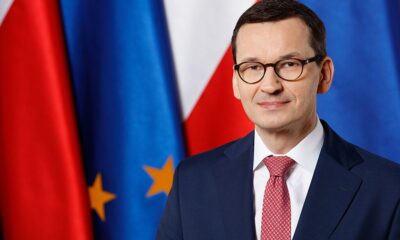
 Politics2 days ago
Politics2 days agoPoland’s Former Prime Minister Mateusz Morawiecki Eyes Leadership of European Conservatives and Reformists
-
EU & the World2 days ago
Mike Lynch Yacht Update: Fifth Body Recovered Off Coast of Sicily
-

 EU & the World2 days ago
EU & the World2 days agoDoes Travis Kelce Appear in Swift’s ‘I Can Do It With a Broken Heart’ Music Video?
-

 EU & the World2 days ago
EU & the World2 days agoLil Jon Brings the House Down at the 2024 DNC With ‘Turn Down for What’
-
Travel3 days ago
Southern European tourists flock to Denmark to escape the heat
-
Travel3 days ago
New Brussels to Venice night train: The 9 cities en route, what it will cost and how to book
-

 Sports2 days ago
Sports2 days agoTurin, Urbano Cairo retorts to fans on Bellanova



